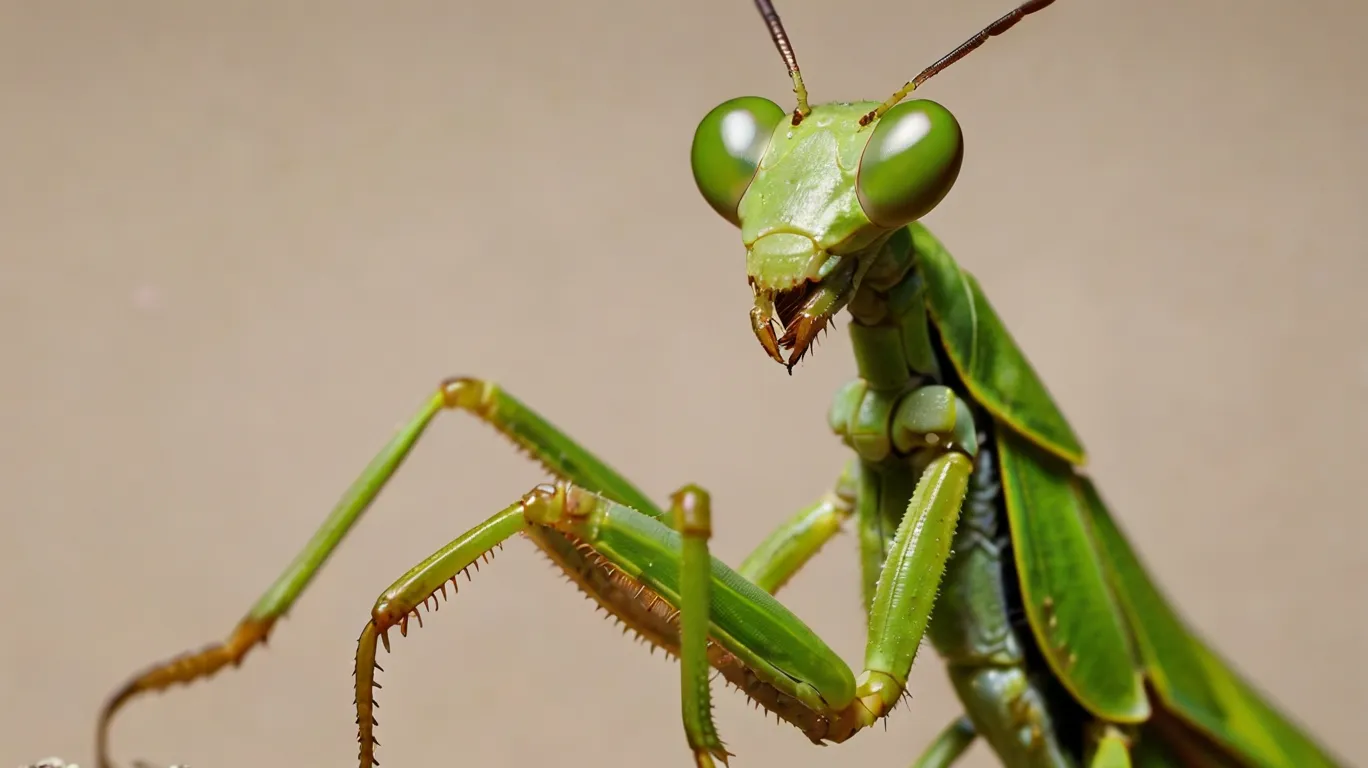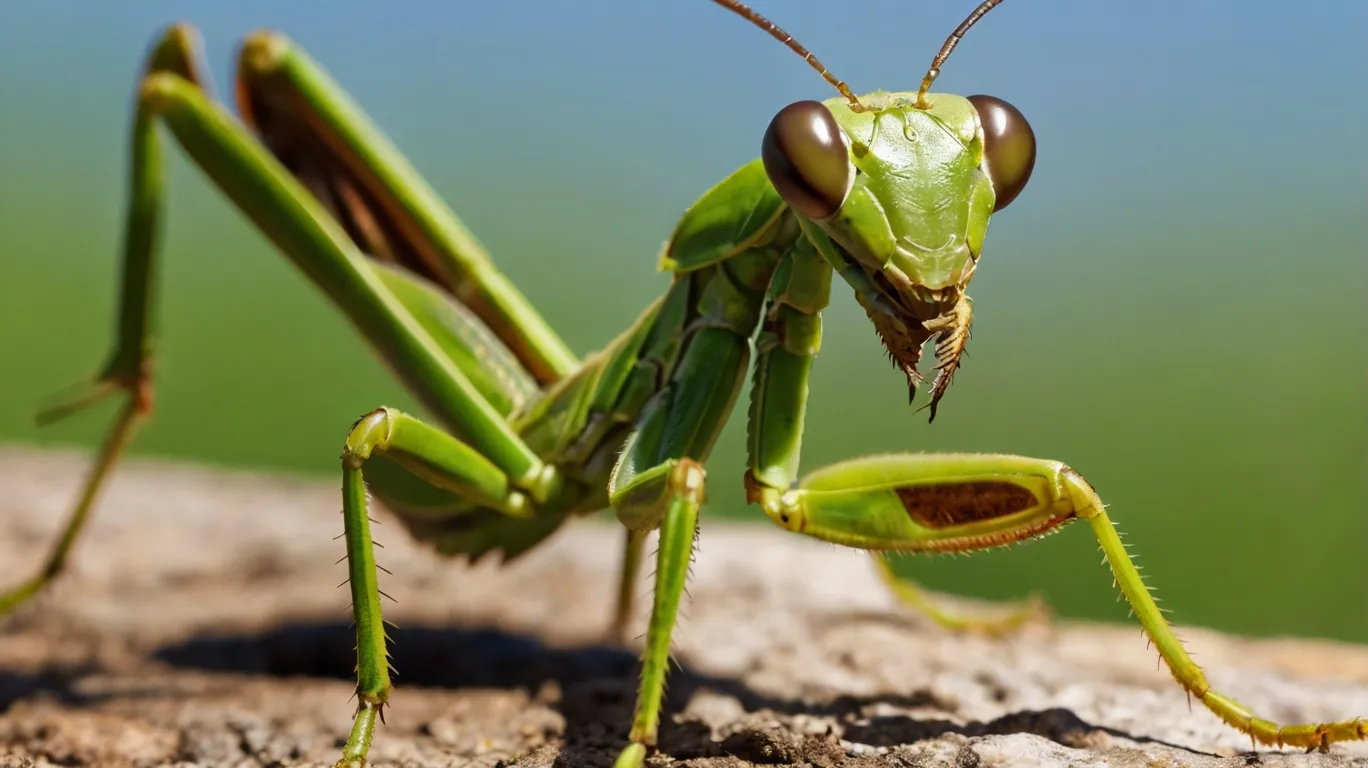Mantis Medical Information & Health Guide
Understanding Mantis Health
Praying Mantises are fascinating insects that are relatively easy to care for, but they are delicate, especially during molting. Their health relies heavily on proper environmental conditions (temperature, humidity, ventilation), appropriate diet, and avoiding injury. Veterinary care for mantises is virtually non-existent; keeper knowledge and prevention are essential. Most issues are related to molting, injury, or poor husbandry. This guide provides general information based on hobbyist experience and is not a substitute for specialized expertise or the extremely rare chance of finding veterinary help.

Common Mantis Health & Molting Issues
Molting is the most critical time for a mantis.
- Dysecdysis (Bad Molt / Mismolt): The most common cause of death in captivity. Difficulty shedding the old exoskeleton, often due to incorrect humidity (usually too low, sometimes too high/wet preventing drying), lack of suitable hanging space, disturbances during molting, or underlying weakness.
- Symptoms: Mantis stuck in old skin, falling during molt, deformed limbs/wings after molt, inability to hang properly, death.
- Prevention: Provide correct species-specific humidity (often slightly higher humidity needed nearing a molt), ensure ample vertical space with climbable surfaces (mesh, branches) for hanging, maintain stable temperatures, avoid disturbing the mantis when it positions itself to molt (hanging upside down, still). Ensure enclosure is tall enough (at least 3x mantis length).
- Intervention (Extremely Risky): If a mantis falls during a molt or is clearly stuck for hours, intervention is usually futile and likely to cause more damage. Some *very* experienced keepers might try stabilizing a fallen mantis to let it finish, or applying minuscule amounts of moisture with a fine brush to stuck points, but success is rare. Euthanasia (freezing) may be considered for severely deformed individuals that cannot eat or move.
- Injury (Falls, Damage): Mantises can be injured by falls, especially adults with heavier abdomens, or damage during handling or enclosure maintenance. Lost limbs are common but usually regenerate partially/fully over molts (if not adult).
- Symptoms: Visible wounds, broken limbs, bent antennae, damaged wings (adults).
- Prevention: Provide secure climbing surfaces, handle gently and infrequently (allow mantis to walk onto hand rather than grabbing), ensure enclosure height is appropriate, avoid startling the mantis.
- Treatment: Minor limb loss usually requires no treatment other than good husbandry. Keep conditions clean to prevent infection at wound sites. Severe injuries are often fatal or necessitate euthanasia.
- Dehydration/Starvation: Lack of water (especially crucial for humidity-loving species) or insufficient/inappropriate food.
- Symptoms: Lethargy, weakness, thin appearance, inability to hunt or molt successfully.
- Prevention: Offer water via light misting of enclosure sides (mantis will drink droplets) or a damp sponge (ensure it’s kept clean), frequency depends on species’ humidity needs. Feed appropriately sized prey (fruit flies for nymphs, larger flies, crickets, roaches for larger mantises) regularly (every 1-3 days depending on age/size). Avoid prey that can fight back and injure the mantis.
- Treatment: Offer water droplets directly to mouthparts using a syringe or pipette. Offer easily caught, appropriate prey. Ensure correct temperature/humidity.
- Fungal Infections: Can occur in overly damp, stagnant conditions with poor ventilation. May appear as dark spots or fuzzy growth, often around joints or wounds.
- Symptoms: Black spots, discoloration, sometimes fuzzy growth on exoskeleton.
- Prevention: Ensure good cross-ventilation (mesh top often essential), maintain correct humidity without constant wetness, allow enclosure to dry slightly between mistings, remove waste/old food promptly.
- Note: Difficult to treat. Improve ventilation and hygiene. Isolate affected mantis. Often fatal.
- Parasites (Internal – e.g., Horsehair Worms): Rare in captive-bred mantises but possible if wild-caught prey (like crickets) are used. Horsehair worms grow inside the host and emerge (often when near water) to reproduce, killing the host.
- Symptoms: Mantis may behave erratically, seem bloated, or suddenly die as the large worm emerges.
- Prevention: Use captive-bred feeder insects from reliable sources. Avoid feeding wild-caught insects.
- Note: Untreatable once infected. The worm’s emergence is fatal to the mantis.
- Eye Rub/Damage: Mantis repeatedly rubbing its eyes against enclosure surfaces, often due to stress, inappropriate enclosure size/setup, or irritation. Can lead to blindness or infection.
- Symptoms: Clouded or scarred appearance of the compound eyes, obsessive rubbing behaviour.
- Prevention: Provide adequate space, ensure smooth enclosure surfaces near common perching spots, maintain optimal conditions to reduce stress.
- Note: Damage is usually permanent. Ensure the mantis can still hunt effectively; may require assistance feeding if severely visually impaired.
- Gut Impaction (Rare): Usually from eating indigestible material or oversized/hard-shelled prey.
- Symptoms: Bloated abdomen, refusal to eat, lethargy.
- Prevention: Feed appropriately sized, soft-bodied prey. Avoid hard beetles or chitinous insects that are too large.
- Note: Very difficult to diagnose or treat. Ensure good hydration and warmth.
- Chemical Toxicity: Extreme sensitivity to pesticides, aerosols, cleaning products.
- Symptoms: Twitching, paralysis, erratic movements, sudden death.
- Prevention: Strict avoidance of all chemicals near the mantis or its enclosure/food. Use pesticide-free feeders.
- Note: Almost always fatal.
Husbandry Practices for Healthy Mantises
Good care is simple but crucial for these delicate insects.

- Appropriate Enclosure: Needs to be roughly 3x the mantis’s length in height and 2x its length in width. Excellent ventilation (mesh top is ideal) is critical.
- Climbing Surfaces: Provide twigs, branches, mesh, or plastic plants reaching near the top for proper molting posture.
- Temperature & Humidity: Research species-specific needs. Most enjoy temperatures between 70-85°F. Humidity varies greatly (desert vs. tropical). Achieve humidity via misting (frequency depends on species and ventilation).
- Feeding: Offer appropriately sized live prey. Flying insects (flies) are often preferred and safer than crickets. Feed nymphs (L1-L3) fruit flies (D. melanogaster or D. hydei). Gradually increase prey size. Feed every 1-3 days depending on age/size and prey offered. Remove uneaten prey.
- Water: Light misting provides drinking water. Frequency depends on species’ humidity requirements (daily for some tropicals, every few days for others).
- Substrate (Optional but Recommended): Coco fiber, peat moss, or paper towels help maintain humidity and provide cushioning if falls occur.
- Avoid Disturbances During Molting: Recognize pre-molt behavior (inactivity, hanging upside down) and leave the mantis completely undisturbed.
- Gentle Handling (If Necessary): Coax the mantis onto your hand; avoid grabbing it. Handle infrequently.
General Signs of Poor Health in Mantises
Observe carefully for any changes:
- Difficulty molting, getting stuck, falling during molt
- Deformed limbs or wings after molting
- Lethargy, weakness, inability to climb or hang
- Refusal to eat for prolonged periods (not related to pre-molt)
- Thin or shriveled appearance
- Visible injuries
- Dark spots or fungal growth on exoskeleton
- Cloudy or damaged eyes
- Erratic movements, twitching
- Bloated abdomen (potential impaction or parasites)
Finding Veterinary or Expert Help
Formal veterinary care is unavailable; experienced keepers are the support network.
- Veterinary Care: Not a realistic option for mantises.
- Experienced Keepers & Communities: Online forums, Facebook groups (e.g., “Praying Mantis Keeping” groups), and insect hobbyist sites are the best resources. Experienced keepers can provide guidance based on symptoms and husbandry practices.
- Provide Clear Details: When seeking help, include: mantis species, instar (L-stage) or adult, detailed setup (enclosure type/size, temp, humidity, ventilation, misting frequency), feeding details (prey type/size, frequency), date of last molt, clear photos/videos of the mantis and enclosure, and description of the problem.